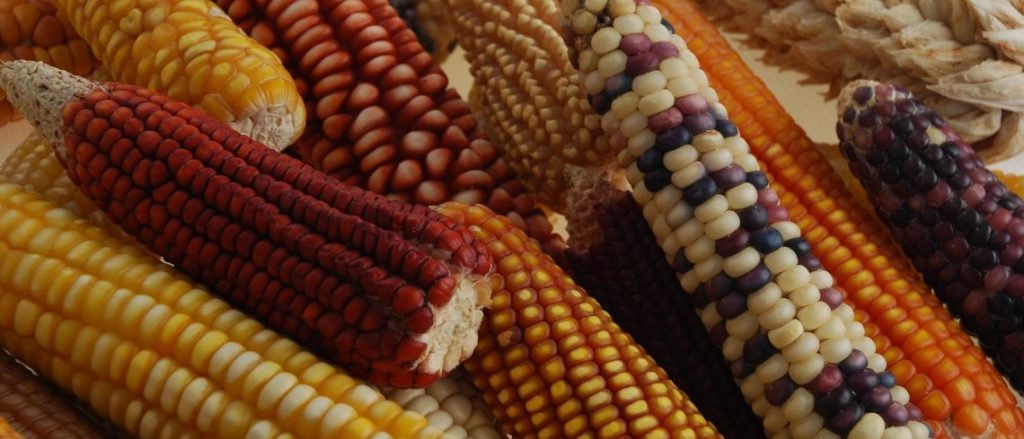
The Molecular Maize Atlas encourages genetic diversity

Maize ears from CIMMYT’s collection, showing a wide variety of colors and shapes. CIMMYT’s germplasm bank contains about 28,000 unique samples of cultivated maize and its wild relatives, teosinte and Tripsacum. These include about 26,000 samples of farmer landraces — traditional, locally-adapted varieties that are rich in diversity. The bank both conserves this diversity and makes it available as a resource for breeding. (Photo: Xochiquetzal Fonseca/CIMMYT)
With so much germplasm to categorize, what’s the best way to label them? Seeds of Discovery is working on the answer.
Imagine walking through a grocery store, doing your weekly shopping. Everything seems normal, but as you pick up a can, there’s no label. There’s nothing to tell you what the product is, and now you can’t reliably choose anything to eat this week.
Now switch gears and imagine a germplasm bank. Without the right labeling on these different varieties, it’s difficult to tell what’s new and what’s already been discovered when working on new research projects.
That’s where the Molecular Maize Atlas steps into play.
About nine years ago, the International Maize and Wheat Development Center (CIMMYT) started an initiative called the Seeds of Discovery (SeeD). This initiative facilitates easier access to and use of maize and wheat genetic resources.
SeeD achieves impact through five main components: genotyping, phenotyping, software tools, pre-breeding and capacity building.

Sarah Hearne serves as molecular geneticist and maize lead of SeeD.
“One of the aims of Seeds of Discovery was to best characterize germplasm,” says Sarah Hearne, a molecular geneticist and maize lead of SeeD. “At CIMMYT, our international germplasm bank holds in trust one of the largest and most diverse publicly available maize collections in the world.”
However, Hearne says this germplasm bank used to look like a grocery store without any labels or without labels that would allow someone to select a can of value. To combat this, SeeD decided to work on a labeling process for the germplasm bank: the Molecular Maize Atlas.
The Molecular Maize Atlas is an information platform that brings genotypic data resources and associated tools together. This genotypic data provides unifying information across landraces and acts as a common backbone, which other valuable information, like phenotypic data, can be added to.
Read the full article on SeedWorld.
